From the AI trend triggered by ChatGPT to the commercialization of driverless, AI is accelerating its penetration into various industries. As a basic industry, agriculture is also inevitably entering the “AI+” era. From seeding to management, from pest identification to variable fertilization, intelligent agricultural machinery is “visible speed” into the public’s view. This article will focus on the real application scenarios, technical limitations, market evolution path and future trends of AI agricultural machinery to discuss in depth.
Many publicity claims that AI agricultural machinery can be self-driving, accurate identification, unmanned operation, but the actual landing effect is uneven. Some farmers have benefited greatly, while others feel that “they can’t use it and don’t worry about using it”. This is the current most worth thinking about: AI agricultural machinery can become the new normal of modern agricultural production?
If you are considering whether to “get on” AI agriculture, or are assessing whether the technology investment is worth it, this article will provide you with a clear answer. Follow the editor together to understand the real performance of AI farm machinery technology in different farms, and what direction may really change the agro-ecology in the future.
Contents
- 1 Ⅰ.What do users really care about? Not “show off”, but practical
- 1.1 ✅ 1. Can it save labor and reduce labor costs?
- 1.2 ✅ 2. Is the equipment complex? Is it good to use, is it good to repair?
- 1.3 ✅ 3. How big is the initial investment? How long will it take to pay back the capital?
- 1.4 ✅ 4. Is it suitable for my land? Will it grow the crops I grow?
- 1.5 ✅ 5. Will the data be faulty? Who can I call if it breaks down?
- 2 Ⅱ.AI intelligent farm machinery how to work? 4 core technology scenarios
- 3 Ⅲ.Applicable Scenarios vs Limitations: Intelligent Agricultural Machines are not “universally applicable”
- 4 Ⅳ.From “concept” to ‘landing’: the real trend of AI agricultural machinery
- 5 V. Who is doing intelligent agricultural machinery? Representative brands & user voice
- 6 Conclusion
Ⅰ.What do users really care about? Not “show off”, but practical
For most agricultural users, the technical sophistication is not the first factor to consider. What they are concerned about is: whether the equipment can really help, is it worth the money. Here are the five most common and realistic questions farmers have when shopping for AI smart farm machinery:
✅ 1. Can it save labor and reduce labor costs?
Not being able to find people during the busy farming season and labor wages rising every year are the challenges faced by many agricultural users. If AI intelligent agricultural machinery can not really reduce labor input, just “a different way to drive”, then its significance will be greatly reduced. The real practical intelligent agricultural machinery should be able to replace part of the labor force, reduce the dependence on skilled operators, to achieve the “one person in charge of multiple machines” cost reduction goals.
✅ 2. Is the equipment complex? Is it good to use, is it good to repair?
Farmers don’t like equipment they can’t understand. No matter how advanced the equipment is, if it is difficult to get started, troublesome to maintain, and you can’t find someone to fix it when it breaks down, then it is impractical. Intelligent agricultural machinery to enter the field, must have “foolproof operation”, visualization interface and easy to learn control logic; after-sales service must respond in a timely manner, preferably equipped with video teaching and remote diagnostic support, to reduce the risk of delay in farming due to equipment failure.
✅ 3. How big is the initial investment? How long will it take to pay back the capital?
The initial price of AI farm machinery is often higher than that of traditional farm machinery, and farm operations are already capital-strapped. Whether it can pay back in 2~3 years by saving labor, improving efficiency, and reducing wastage is the key to whether users are willing to invest. If the equipment is bought and put back to eat dust, and you have to spend money on maintenance every year, it becomes a burden instead.
✅ 4. Is it suitable for my land? Will it grow the crops I grow?
The AI farm machine is not a one-size-fits-all machine. Different plot conditions and different crop types have completely different requirements for intelligent systems. For example, can hilly terrain be accurately navigated? Can orchard crops be recognized? Can the rice transplanter be adapted to small fields? If the equipment is only suitable for large plains or specific crops, then most farmers can only “see the fun”.
✅ 5. Will the data be faulty? Who can I call if it breaks down?
AI equipment often involves big data, remote connection, operation records and other systems, once data loss, software anomalies, GPS failure, the consequences may be more serious than traditional farm machinery. Therefore, users are generally worried about the risks of “no one to repair the equipment when it breaks down”, “not being able to contact anyone when something goes wrong”, and “not being able to understand after-sales service because of the language barrier”. Whether it can guarantee the stability and safety of the data, and in case of problems, there are “people can contact, things can be solved”, determines whether users are willing to trust the system.
AI+Agriculture can’t just be a cool slogan. Only by truly solving the pain points encountered by users on the land, AI agricultural machinery can be considered a ‘tool of the future’; otherwise, it is just a technology bubble.
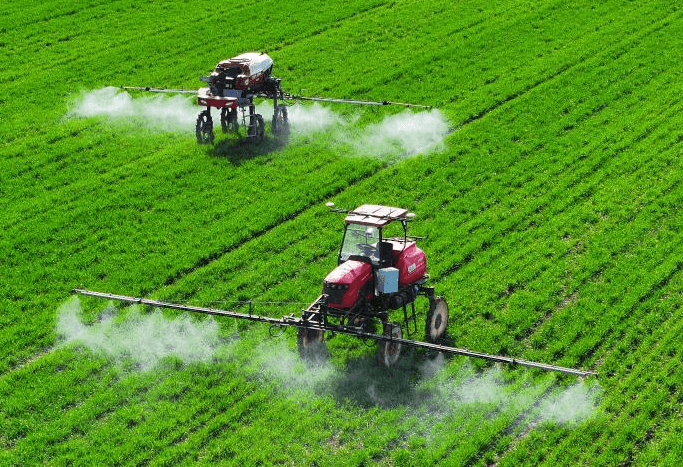
Ⅱ.AI intelligent farm machinery how to work? 4 core technology scenarios
Intelligent farm machinery is not “stick an AI label” even if the smart, it relies on a whole set of algorithms, hardware, navigation and perception of the integrated system. The following are the four most widely used and core technology scenarios:
✅ 1. Automatic navigation system (unmanned)
The automatic navigation system consists of GPS (global positioning), RTK (real-time dynamic differential), IMU (inertial navigation) and other high-precision navigation components. Through these systems, agricultural machinery can realize fully automatic path planning and operation driving in the field, which can:
accurately control the operation route and depth;
automatic turnaround and obstacle avoidance operation;
control error within 2.5cm, greatly improving the efficiency of cultivation;
support night operation and complex terrain operation;
reduce manual intervention, realizing single person controlling multiple machines.
This system is widely used in self-driving tractors, seeders, rotary tillers and other equipment, which is one of the most basic and practical intelligent functions of AI agricultural machines.
✅ 2. AI Vision Recognition System
AI vision system mainly uses HD camera + deep learning image algorithm to identify and judge the field situation in real time, such as:
identifying the type and degree of pests and diseases;
judging the growth condition and maturity of crops;
detecting the weed area and pesticide residue;
combining with spraying machine or harvester to realize precise control of the operation timing and operation position.
Compared with the traditional “judgment by experience”, AI recognition is more efficient, objective and continuous, greatly improving crop management accuracy and reducing the risk of overuse and waste.
✅ 3. Soil Data Analysis and Variable Fertilizer Application System
This system combines sensors (e.g. PH sensors, nitrogen, phosphorus and potassium analyzers) and AI data analysis models to achieve dynamic detection and intelligent feedback on soil:
Real-time collection of soil moisture, temperature, nutrient concentration, acidity and alkalinity, etc.;
Variable irrigation and differential fertilizer application according to the needs of the crop;
Automatic adjustment of fertilizer application ratio and irrigation water volume to achieve resource saving; Reduce the waste of fertilizers, avoiding soil condensation and nutrient imbalance.
This makes agriculture no longer “empirical agriculture”, but gradually moving towards refined cultivation and scientific management.
✅ 4. IoT Remote Operation and Maintenance Platform for Agricultural Machines
The Internet of Things (IoT) system connects intelligent agricultural machines, sensors, and control terminals, and through the backstage management platform of cell phone app or webpage, users can:
check the running status of the equipment in real time, and progress of the path planning;
remotely give the operation commands such as startup, pause, and path adjustments;
receive the warning of equipment failures, and reminders of maintenance; and
generate reports for the purpose of management decision-making and analysis.
Large farms through the platform can unify the scheduling of multiple equipment, reduce the number of manual inspections, improve the efficiency of operational coordination, especially important for agricultural socialization services, hosting operations.
These four systems constitute the AI agricultural machinery “nervous system + muscle system”, their organic cooperation makes the agricultural machinery can not only move, but also ‘perceive’ “think” “Feedback”, so that agricultural production efficiency and precision to reach an unprecedented height.
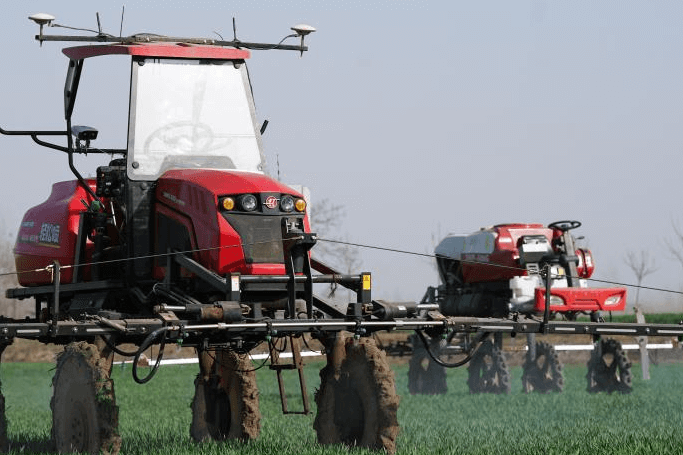
Ⅲ.Applicable Scenarios vs Limitations: Intelligent Agricultural Machines are not “universally applicable”
As one of the core applications in the field of “AI+Agriculture”, intelligent agricultural machines have significant efficiency gains and data advantages, but not all farms, all crops, and all regions can immediately get started or directly benefit from them. All farms, all crops, all regions can immediately start or directly benefit. To correctly judge its value, it is necessary to examine the “ideal fit scenario” and “realistic landing limitations” together.
✅ Suitable user groups
1. Large and medium-sized farms
These farms are characterized by concentrated plots, large areas, farming rules, and standardized planting patterns, which are very suitable for the intervention of technologies such as automatic navigation and path planning.
AI farm machines can take advantage of high efficiency, low error and labor saving in such scenarios, especially suitable for repetitive operations such as sowing, plowing and harvesting.
2. High-value-added crop growers
Farmers who grow fruits, economic vegetables or organic agricultural products have higher requirements for precise fertilization, precise harvesting and intelligent irrigation, and are willing to pay for yield improvement and quality control.
AI visual recognition system and variable management system can accurately control the use of medicine and fertilizer in these scenarios, reduce waste, and improve yield.
3. Specialized agricultural cooperative organizations or hosting service providers
such as agricultural machinery service companies, planting cooperatives, etc., such subjects have more operational experience, technical carrying capacity and personnel training capacity, and are more motivated to bulk purchase and unified scheduling of AI equipment.
Under their impetus, AI agricultural machinery can realize “service sharing” and promote the intelligent upgrading of rural agriculture.
Major limitations of current applications
1. Insufficient network and digital infrastructure
Poor network coverage, slow data upload, and weak GPS signals in remote areas seriously affect the navigation stability and data transmission ability of AI agricultural machines.
If there is no stable 4G/5G network and cloud platform foundation, it will limit the use of IoT remote management system and real-time decision-making platform.
2. Small farmers do not have the ability to use
Small family farms or groups of elderly farmers often lack the experience and willingness to learn to operate smart devices.
Even if the equipment is purchased, high training costs, complex operation, and inconvenient maintenance will become “decoration rather than productivity.
3. Technology immaturity or insufficient localization
Currently, some AI algorithms are still based on European and American field scenarios, and are not sufficiently adapted to agronomic methods such as Asian hilly areas, mixed sowing, and sowing sets.
For example, there are still low recognition rates and false triggering problems in weed identification and pest monitoring, which require further “scene localization training”. 4.
4. Inadequate after-sales system
Once the AI equipment breaks down, it is difficult for traditional maintenance personnel to deal with errors involving software and algorithms.
If the brand has not established a local technical service point or remote support team, users can only “dry anxious”. This is the fundamental reason why many users are worried about “no one to repair the problem”.
✅ Practical advice:
Intelligent farm machinery is not a “magic weapon”, but a precision tool. It must be matched with:
Suitable farming area and terrain
Sufficient digital infrastructure support
Professional use and maintenance team
For agricultural users who are just starting out, it is recommended to give priority to brands such as MINNUO, which provides optional lightweight AI modules (e.g., auto-navigation + visual recognition) and remote Chinese/English after-sales support mechanisms, so that intelligent from “usable” to ‘usable’ gradually transitioned to “maintenance”. This will enable intelligentization to gradually transition from “usable” to “usable, commonly used and less problematic”.
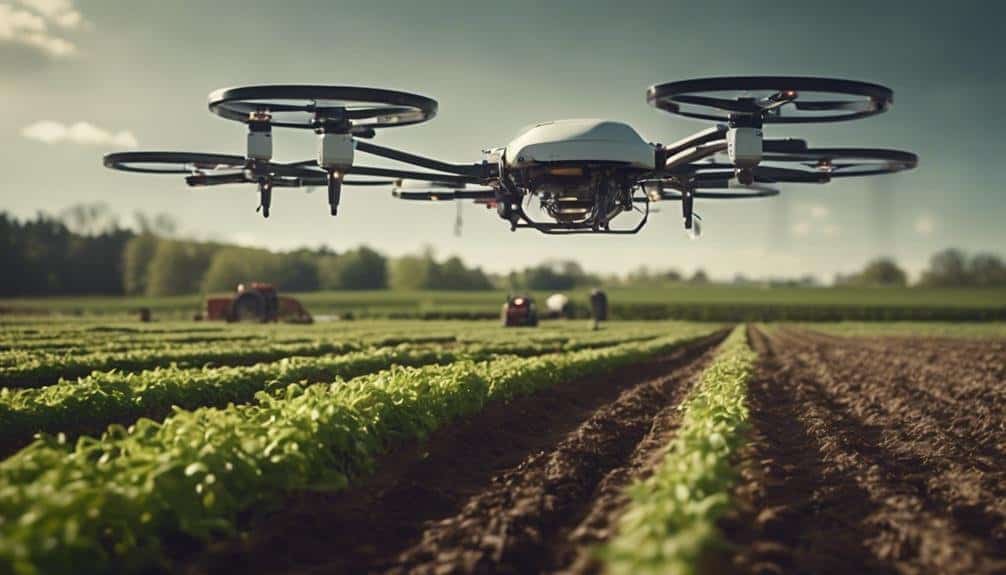
Ⅳ.From “concept” to ‘landing’: the real trend of AI agricultural machinery
Intelligent agricultural machinery from the initial “science and technology exhibition concept products”, and gradually enter the farmers’ field of vision and cultivation site. Nowadays, AI + agriculture is no longer just “looks great”, but in many dimensions gradually realize available, good, worth investing. All this is inseparable from the evolution of technology and market policy of the double wheel drive.
✅ The cost of technology is decreasing year by year: intelligent devices are no longer “high up”
1. Edge computing devices are cheaper, and image processing performance is significantly improved
AI functions that used to be supported by expensive chips and high-end GPUs can now be completed by lightweight edge computing modules (e.g., NVIDIA Jetson Nano, domestically produced AI chips). Completion. This means that while the cost of the equipment is reduced, the processing speed and recognition ability are increasing, opening up possibilities for small and medium-sized farm users.
2. AI model localization adapts to more crop types and environmental differences
AI algorithms are no longer limited to European and American crop data training, and now domestic manufacturers have begun to build recognition models for rice, corn, grapes, tomatoes, citrus and other Chinese specialty crops, which dramatically improves the recognition accuracy and utility, and reduces the risk of misrecognition and wrong spraying.
3. Rise of modular design, more flexible maintenance and expansion
AI intelligent farm machinery is gradually forming the structure of “general-purpose farm machinery + intelligent module plug-in”: for example, users can choose modules such as automatic navigation, visual recognition, variable fertilizer application, etc., and combine them according to their needs. This modular structure makes the maintenance of equipment simpler and more flexible for later upgrades, greatly reducing the learning and maintenance costs of the entire system.
✅ Policy and market environment speed up in both directions: from “self-use” to “national strategy”
1. China’s “smart agriculture” policy support has been introduced intensively
The central government and local governments have accelerated the promotion of “smart agriculture” in recent years. The central and local governments have accelerated the promotion of “smart agriculture” and “digital countryside” policies in recent years, encouraging new agricultural business entities to introduce automated and intelligent agricultural machinery and equipment, and supporting policies such as subsidies for the purchase of agricultural machinery, incentives for unmanned transformation, and support for field testing and validation, so as to push AI agricultural machinery out of the laboratory and into the land. Land. 2.
2. Overseas market demand for “precision agriculture” and “low-carbon agriculture” grows
In Europe, America, Japan, South Korea, the Middle East and other markets, farmers face labor shortage and environmental protection requirements, and begin to take the initiative to look for solutions that can save water, fertilizers, pesticides, and high efficiency. Intelligent agricultural machinery has obvious advantages in this regard, and has become an important part of the agricultural development strategy of many countries.
3. Investment institutions layout agricultural AI ecological chain
Ali, Jingdong, Pinduoduo and other Internet giants, is through the agricultural sector investment cut into the intelligent agricultural machinery track; at the same time, a large number of startups focus on agricultural AI chips, control systems, sensors, agricultural big data services and other key links, forming a complete industrial ecological closed loop.
AI agricultural machinery is completing the metamorphosis from “only tell stories” to “really solve problems”.
The technology is no longer out of reach, the policy is no longer only to encourage, the market is no longer only concerned about “cheap and easy to use”, but in pursuit of “accurate, sustainable, high output value”.
V. Who is doing intelligent agricultural machinery? Representative brands & user voice
With the gradual popularization of AI technology in the field of agriculture, more and more brands are beginning to introduce “intelligent” features into agricultural products. However, there are not many brands that can really achieve “on-the-ground application” and “solve practical problems”. Below is a list of several representative companies and their users’ feedback, which illustrates the facts: Whose AI agricultural machinery is really accepted by users? Who is using technology to create real value?
✅ 1. MINNUO (China)
Main equipment: automatic navigation tractor, AI sprayer
AI functions: support for automatic path planning, remote diagnosis, and intelligent application recognition
User feedback:
Southeast Asian farm cooperatives use MINNUO rice transplanter to realize fine work and increase rice transplanting precision by 30%, while reducing labor costs and insertion error rate.
In addition, MINNUO supports remote teaching and debugging of GPS and module parameters through Zoom video for customers, which significantly reduces the learning threshold and after-sales response time.

✅ 2. John Deere (USA)
Main equipment: AI harvesting system, agricultural Internet of Things platform
AI features: support for big data analysis, AI accurate prediction of yields and operating paths
User Feedback:
Large farms in North America use the John Deere agricultural cloud platform to achieve AI agricultural modeling and fine planting decisions, and accurately regulate the harvesting paths and speeds according to the soil data, which effectively enhances the operational efficiency and economy of large machinery. effectively improve the operational efficiency and economy of large machinery.
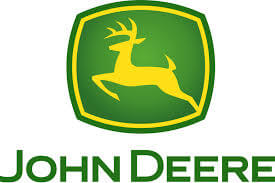
✅ 3. XAG Jiffy (China)
Main equipment: intelligent drone, automatic spraying system
AI function: equipped with image recognition module, automatic identification of crop status and pests
User feedback:
In the orchard scenario, the Jiffy AI spraying system controls the spraying position and time through RTK positioning and AI algorithms, which improves the efficiency of spraying by 2 times and has a higher rate of utilization of the medicine solution, and significantly reduces ineffective spraying and waste.
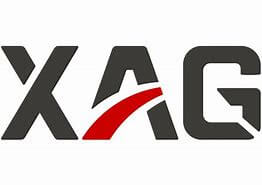
Excerpts from users’ real voices:
“In the past, dosing relied on guessing, but now AI directly recognizes the disease spots, and the amount of medicine used is less than half.” –Shandong Grape Growing User
“MINNUO after-sales service opened Zoom for us and taught us to adjust GPS, which is good and reassuring.” –Indonesian Farm Cooperative
These feedbacks show that AI is no longer a “background computing model”, but an interactive, learnable, and dependable productivity tool. In particular, Chinese brands like MINNUO not only provide intelligent devices, but also provide cross-lingual remote service and training mechanisms, which truly eliminates the barrier of “cold technology”.
| Brand | Country | Main Equipment | Whether AI Function | User Feedback Case |
| MINNUO | China | Auto-guided Tractor, AI Sprayer | ✅ | Southeast Asian Cooperative Uses its Rice Transplanter to Improve Efficiency by 30% |
| John Deere | USA | AI Harvesting System, Agricultural Internet of Things Platform | ✅ | North American Large Farm Uses AI Data Dispatch |
| XAG JIFFEI | China | Unmanned Plant Protection Machine, Automated Irrigation System | ✅ | Fruit Orchard Spraying Efficiency Increases by 2X |
Conclusion
AI intelligent agricultural machinery is neither science fiction nor omnipotent. It is a kind of agricultural tool in line with the trend of the times, which is essentially a technical means to help agriculture realize cost reduction and efficiency, rather than a “magic weapon” that can cure all diseases. Its value depends on whether it can really land – whether it matches the farm scene, whether it has technical service support, whether the user is willing to learn and trust.
For large and medium-sized farms, cash crop planting bases and agricultural cooperative organizations with a certain digital foundation, AI agricultural machinery is undoubtedly a key variable in the next 5 to 10 years to improve agricultural productivity and promote sustainable development.
As for small and medium-sized farmers who are new to smart agriculture, choosing a mature, serviceable and easy-to-use AI farm machinery brand is the right starting point to start smart agriculture.
In this trend, the “AI light mode” solution provided by MINNUO is the bridge for this transformation. Whether it is the automatic navigation, intelligent spraying, variable fertilizer application system, or the after-sales team that supports Zoom video teaching and Whatsapp remote debugging, MINNUO is committed to making AI technology really “walk into the field” in an affordable, usable and maintainable way.

